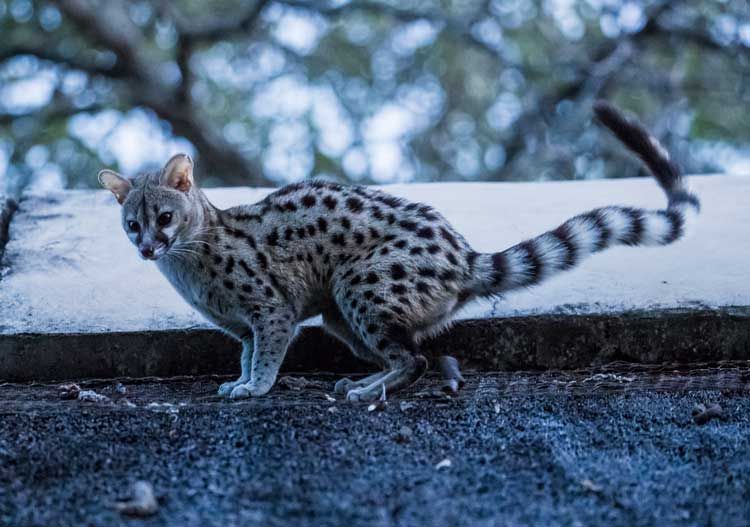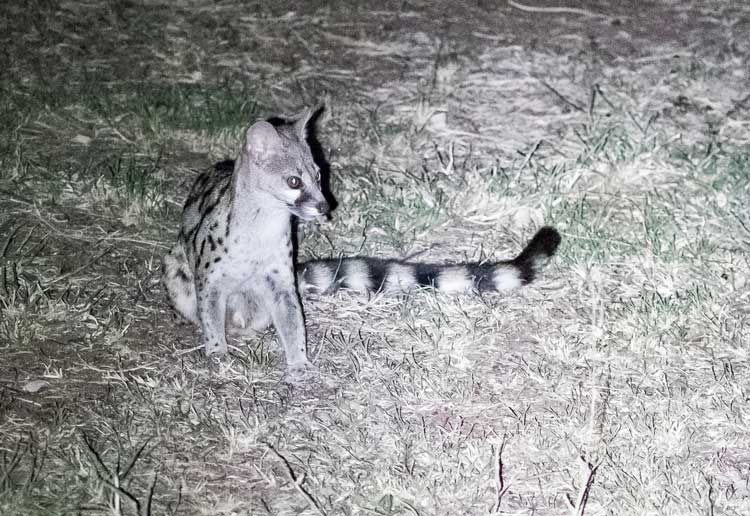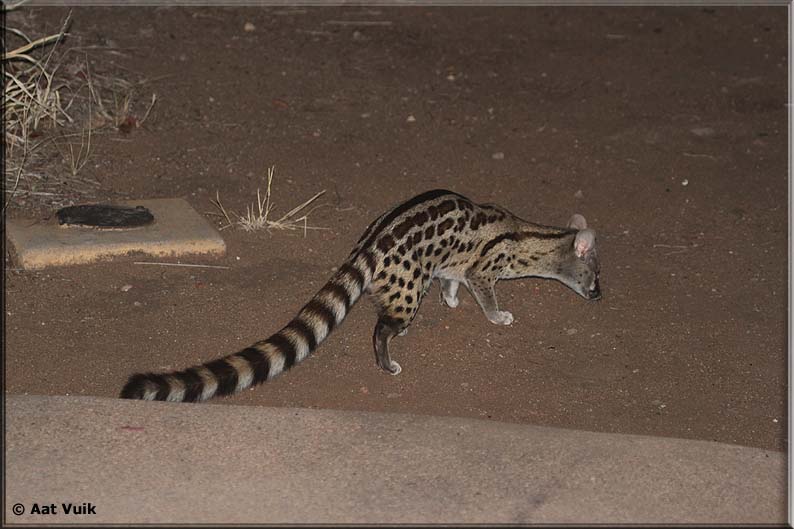South African Small-spotted Genet / Feline Genet Genetta felina
or Small-spotted Genet Genetta genetta
COMMON NAMES
Small-spotted Genet, Common Genet or South African small-spotted Genet and Feline Genet.
The English names for this species are South African small-spotted Genet and Feline Genet. The former is less appropriate than the "Southern" version chosen here since this "species" is present in Namibia and southern Angola too. However, studies have shown that genetic variation within the "Northern" small-spotted genet clade is so high that we likely have there several species. Therefore, "Feline genet" might be the most appropriate English name in the future, and it would already be nowadays, as used for example in the Handbook of the Mammals of the World, Vol. 1, Carnivores (2009).
TAXONOMIC NOTES
There is a high degree of phenotypic variation in this species which resulted in the description of several subspecies; the validity of many of these
remains untested, while others may actually represent distinct subspecies or even species (Gaubert et al. 2004, 2005, 2009). A recent mtDNA-based study suggested at least four distinct geographic lineages within the species circumscribed to the Mediterranean Basin, western Africa (also spread into North Africa), southern Africa and the Arabian Peninsula (Gaubert et al. 2011). The taxonomic status of Genetta felina, a lineage endemic to southern Africa, remains debated (see Gaubert et al. 2004, 2005; Gaubert & Begg 2007).
Genetic and morphometric analyses have shown that "felina" individuals differ from other
G. genetta subspecies. For now regarded as a different species, but other genetic markers or genomic analyses are needed to evaluate the overall % differentiation. Threshold accepted for species level is blurry and varies from taxon to taxon.
Genetta felina may be downgraded to subspecies in the future.
Note that individuals from southern Africa notably differ from their European and other African congeners by the presence of conspicuous “black socks”, i.e. the coloration of the whole hindfoot and that of the posterior part of the forefoot is completely dark.
RANGE DESCRIPTION
In South Africa, the Small-spotted Genet is common in the Eastern, Northern and Western Cape provinces, parts of KwaZuluNatal, and in the Free State Province. But it occurs all over South Africa and also in Namibia, Botswana and southern Zimbabwe.
Protected areas: Kgalagadi Transfrontier Park, Kruger National Park
Sympatric species: Small-spotted Genet occurs in sympatry with Cape Genet (
Genetta tigrina) and Rusty-spotted
G. maculata.
HABITAT AND ECOLOGY
Small-spotted Genets are found in a large variety of habitats.
Small-spotted Genets feed mainly on small mammals, but will also take birds, other small vertebrates, insects and fruits.
In South Africa, radio-tracked genets were crepuscular, starting activity on average around 18h00 (but as early as 16h30) and ceasing around 04h00 (but as late as 07h20). Genets were active between 5 and 13 hours and travelled over 1.7–7.9 km per night, depending on the sex and season.
Small-spotted Genets are solitary but may form pairs during the breeding season. They are territorial, with male home ranges including that of several females but no other adult males, and adult female home ranges do not overlap.
Similar to what is observed in other genet species, intraspecific communication is mainly done through olfaction, notably with scats deposited at conspicuous latrines. These are usually strategically located in the animals’ home range boundaries, such as large tree branches and high rocks.
IDENTIFICATION
The typical "felina" phenotype from Southern Africa has a greyish-ashy background color.
Small to medium-sized spots
White eye brows (quite strongly marked in small-spotted genet)
Erectile dorsal crest (The only genet in Southern Africa with a huge dorsal crest is the small-spotted genet)
"Black socks" = black legs, at the front legs, this is mostly the hind part of the feet which is dark, while the front part is generally grey. Legs also tend to be much darker than in
G. tigrina.
9-11 black rings on the tail (maximum 9 in Cape genet)
Dark and light ring hairs overlapping between rings (one can see black hair within the white rings and overall giving the impression that the rings overlap each other).
Very thick (fluffy) tail (when the genet gets frightened)
White rings broader than black rings.
White tail tip (mostly white-white).
Rusty morph of
G. felina
It has rusty spots but a black dorsal crest typical of the small-spotted genet. Individuals with a rusty tinge often have yellow (instead of fully white) background colour, and this is also the case on the tail. But the tail is otherwise typical, with overlapping black and white hair.
It seems that the rusty morph is dominant in the Kruger National Park.
Links:
https://www.ewt.org.za/wp-content/uploa ... tta_LC.pdf





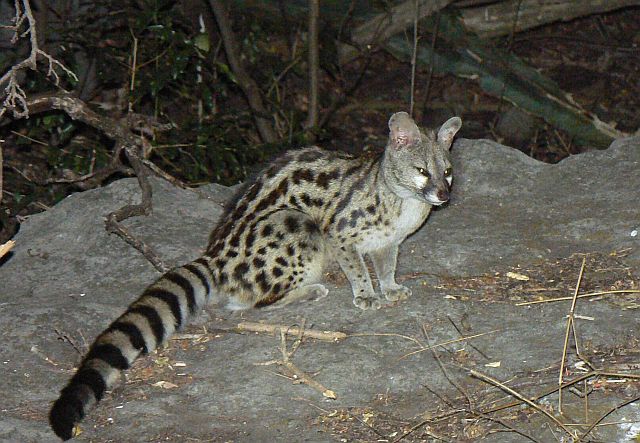

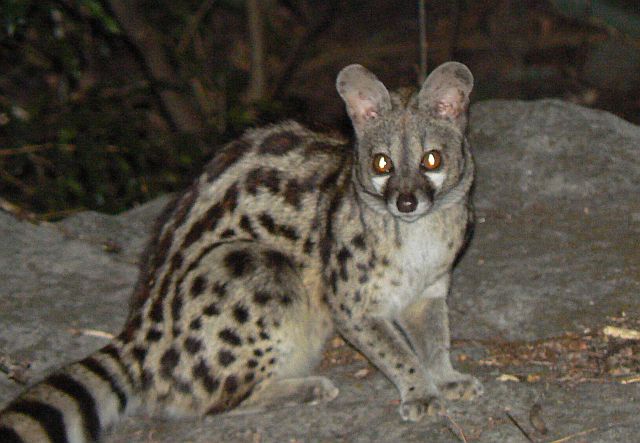





 © Alf
© Alf